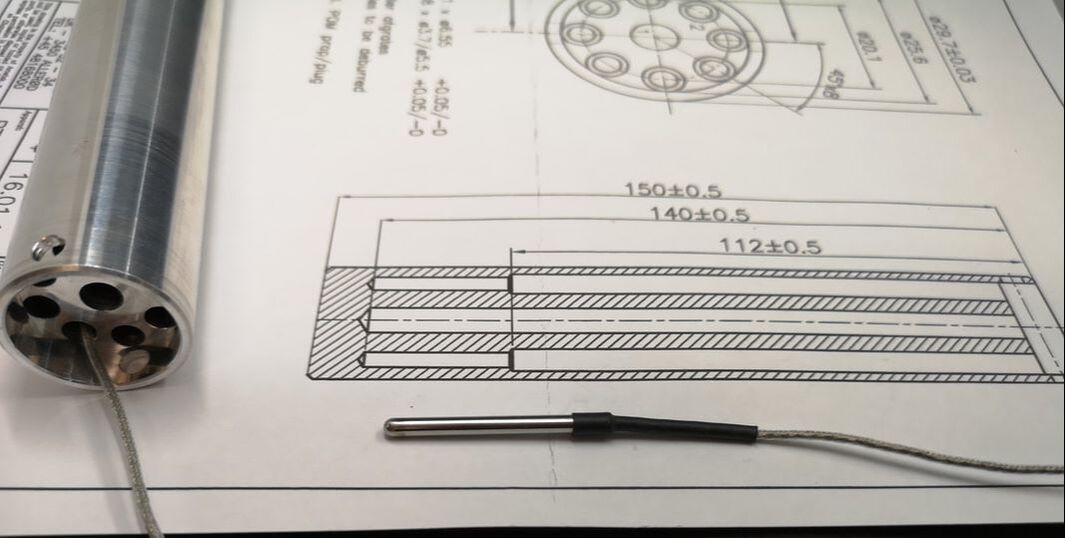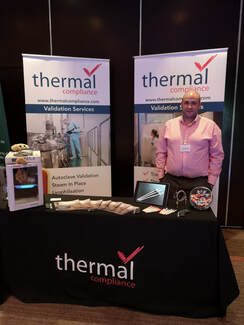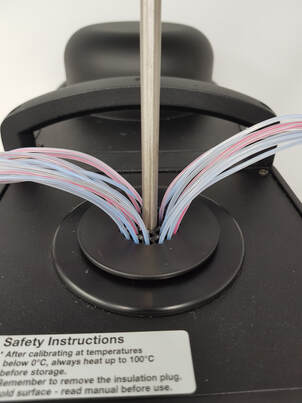| We are exhibiting at the PDA Ireland's 'Practical Implementation of QRM - Are We Getting Value?' event in Cork today. If you're attending please stop by and say hello. The event is exploring the integration of QRM into the PQS & whether by demonstrating effectiveness we may achieve operational advantage & regulatory relief. Presenters include Kevin O'Donnell from the HPRA, guest speakers from Deloitte Life Sciences and Industry. Panel Discussions, workshops and networking opportunities will allow for full exploration of topic. |
|
0 Comments
When working with highly accurate sensors, the calibration bath is critically important to ensuring a good calibration. Some of our sensors have accuracies of ± 0.05°C and we perform testing from -196 to 400°C, so choosing the correct temperature bath is critical for effective calibration of our sensors. In addition to temperature ranges and accuracy we must also consider the design of the thermal wells within the calibration block. Oversized wells allow air between the sensor and the well insulating the sensor and reducing the accuracy of the calibration. This is often seen when doing low temperature calibrations and frost builds up in the airspace in the well insulating the sensor. For Example, calibrating 2mm thermocouples in a 4mm thermal well will result in a poor-quality calibration. The sensors must therefore be placed in a suitable calibration well. For the calibration verification of our Ellab sensors we have a 24 port Jofra Insert drilled with an Insulation cover. This provides extremely accurate and repeatable results from -100 to 150°C, with typical temperature deviations of around ±0.01-0.02°C. For Thermocouple calibration we typically use a Kaye 140 or 400 Calibration Bath. The accuracy of a thermocouple is around ±0.5°C so these baths are ideal for this. The wells of the Kaye 140 and 400 bath are also suitable for the size of most Thermocouples. When using our Vaisala Veriteq system, the design of the sensor impacts the calibration of the probes. The sensor has a stepped seal, so the neck of the probe is larger than the shaft of the probe and the measuring tip. This means that a standard drilled calibration bath, would create an air pocket around the sensor during the calibration. The ideal solution would be to use one of our fluids calibration baths, this however is not always practical when performing onsite calibrations. So we had an insert fabricated to ensure accurate calibrations using our Jofra RTC-159 Calibration Bath. The insert is designed to allow the sensing tip to be placed correctly.  For calibration baths we use
As with any calibration, it is important to ensure that sensors are positioned correctly. Sensors must be fully inserted into the well as temperature varies throughout the axial gradient. The RTC-159 has a unique dual-zone heating control system, which keeps the sensors uniform throughout the block despite thermal load.
Our engineers take pride in every aspect of the qualification process to ensure the highest quality calibration and validation. Using the suitable baths an inserts is one of the many ways our engineers work to continuously improve quality. |
Archives
June 2024
|



 RSS Feed
RSS Feed
